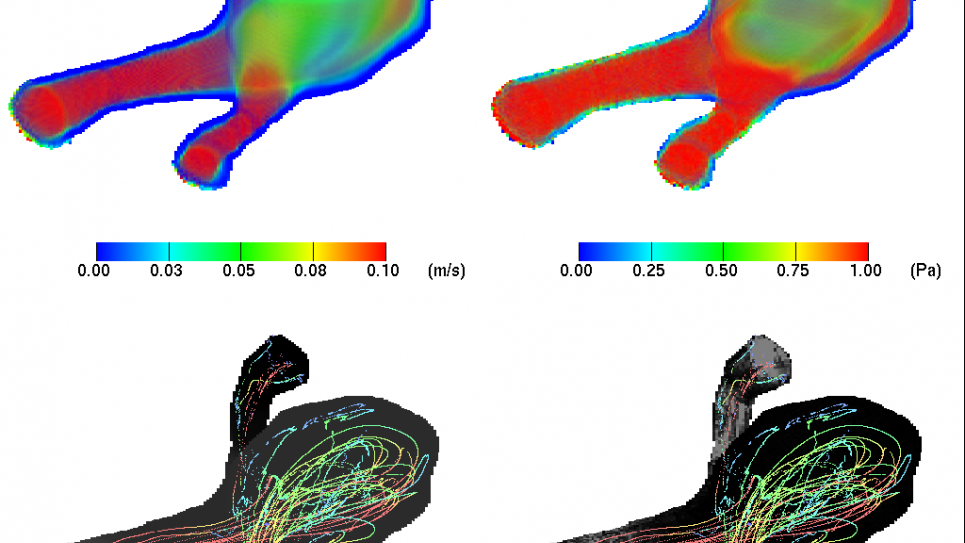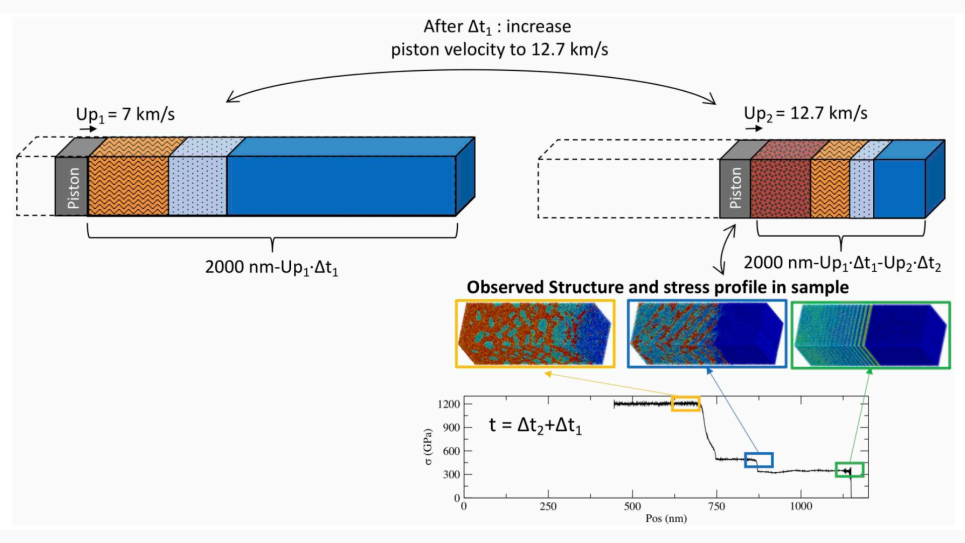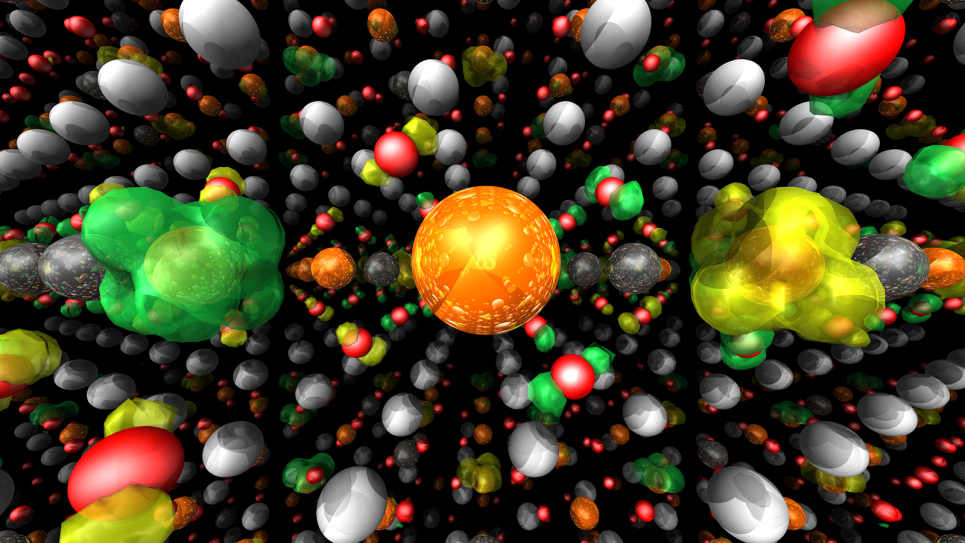
Large-Scale Condensed Matter and Fluid Dynamics Simulations in Three Diverse Areas: Whole Brain Blood Flow Simulations
Cardiovascular disease is the third largest cause of death in the developed world. Cerebral blood flow behavior plays a crucial role in understanding, diagnosing, and treating the disease, where problems are often due to anomalous blood flow behavior in the neighborhood of bifurcations and aneurysms within the brain.
Scientific Approach
Using computer simulations, scientists and clinicians will conduct virtual experiments to study cerebral blood flow at the individual patient level, resulting in customized patient blood-flow simulations.
Having a computational tool surgeons can use, not only to examine the pressure and velocity variations through an individual’s vasculature, but also to predict what changes might occur as a result of interventional surgery, will be an invaluable addition to the surgical tool kit. Because patient-specific data is used as the basis of the simulation, treatments can be assessed for their effectiveness with respect to the individual before being administered, thus reducing risk and expense.
Results
Researchers are focusing on two types of aneurysms which occur in different vessels in the brain—internal carotid artery aneurysms and pericallosal artery aneurysms. Investigations are looking at patients to find relationships between the formation of these aneurysms and their overall brain artery structure.
Future Efforts
Improvements to the computational model will make vessel walls elastic. The result is a far more realistic model of how blood flows through the brain.
INCITE Contribution
"As displayed by each of the three main projects' synopses, the results obtained so far would not have been possible without the INCITE award that was generously awarded to our group. We aim to pursue the paths outlined here and to continue pushing the envelope in terms of scientific, large-scale computing and visualization."
ALCF Contribution
"We are very grateful for the contribution of the whole ALCF team, in all stages of this work. This includes the porting, benchmarking, and optimization of our large-scale parallel codes on the IBM Blue Gene/P machine, as well as use of the team's liaison and outreach facilities. In all these aspects, the support of the ALCF has been invaluable."


